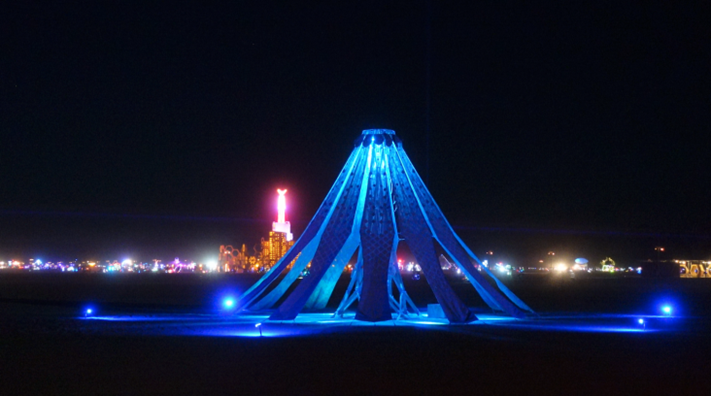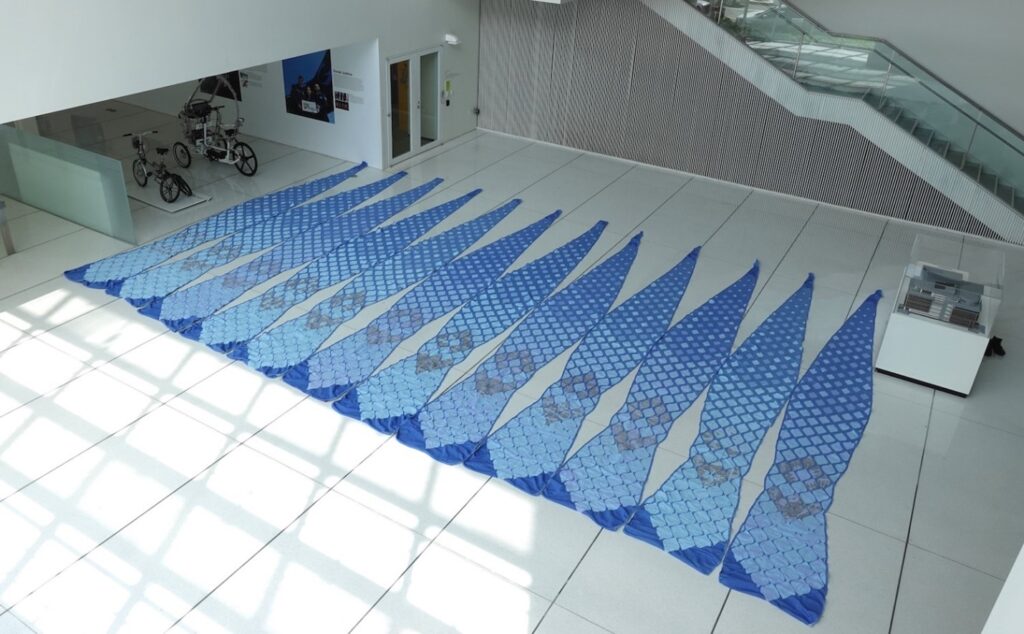
An interactive installation that combined textile arts, smart materials and engineering and received a 2023 Black Rock City Honorarium at the 2023 Burning Man. Set against the vast and surreal backdrop of the Black Rock Desert in Nevada, Burning Man is an annual gathering that transforms the flat, barren expanse into a vibrant playground for artistic and creative expression. With its myriad art installations and performances, Black Rock City is a temporary home for creative minds from around the world.
Among 2023’s large-scale art stood the Living Knitwork Pavilion, an unusual architectural piece crafted from knitted textiles and a lattice network of wood. It was developed and built by a team of researchers from the MIT Media Lab and MIT School of Architecture and Planning, and led by Ph.D. student Irmandy Wicaksono.
The MIT team says that it drew inspiration from the artistry and construction techniques used in traditional textiles, as well as the notion of a pavilion or pagoda serving as a communal space. The pavilion “fused novel materials, sensing technologies, and digital fabrication processes to build a large-scale interactive textile, while also integrating them with intricate details and avenues for self-expression.”

The textile shade structure was constructed of “3D-knitted optically and electrically-active yarns that sense activities and dynamically change color and light up through the day and night.” During sunny days, the patterns and pictures within it were revealed through photochromism. The pavilion provided shade during the day and a lighted communal space at night. Human movements and environmental changes impacted its visual effects and ambiance as activity was re-projected onto the pavilion.
The entire process enabled “custom, multi-layer, aesthetic-technical textiles with unique forms and textures and minimal waste,” the creators report. Recycled materials were used, and the structure was solar powered to reduce noise as well as energy consumption.
 TEXTILES.ORG
TEXTILES.ORG


